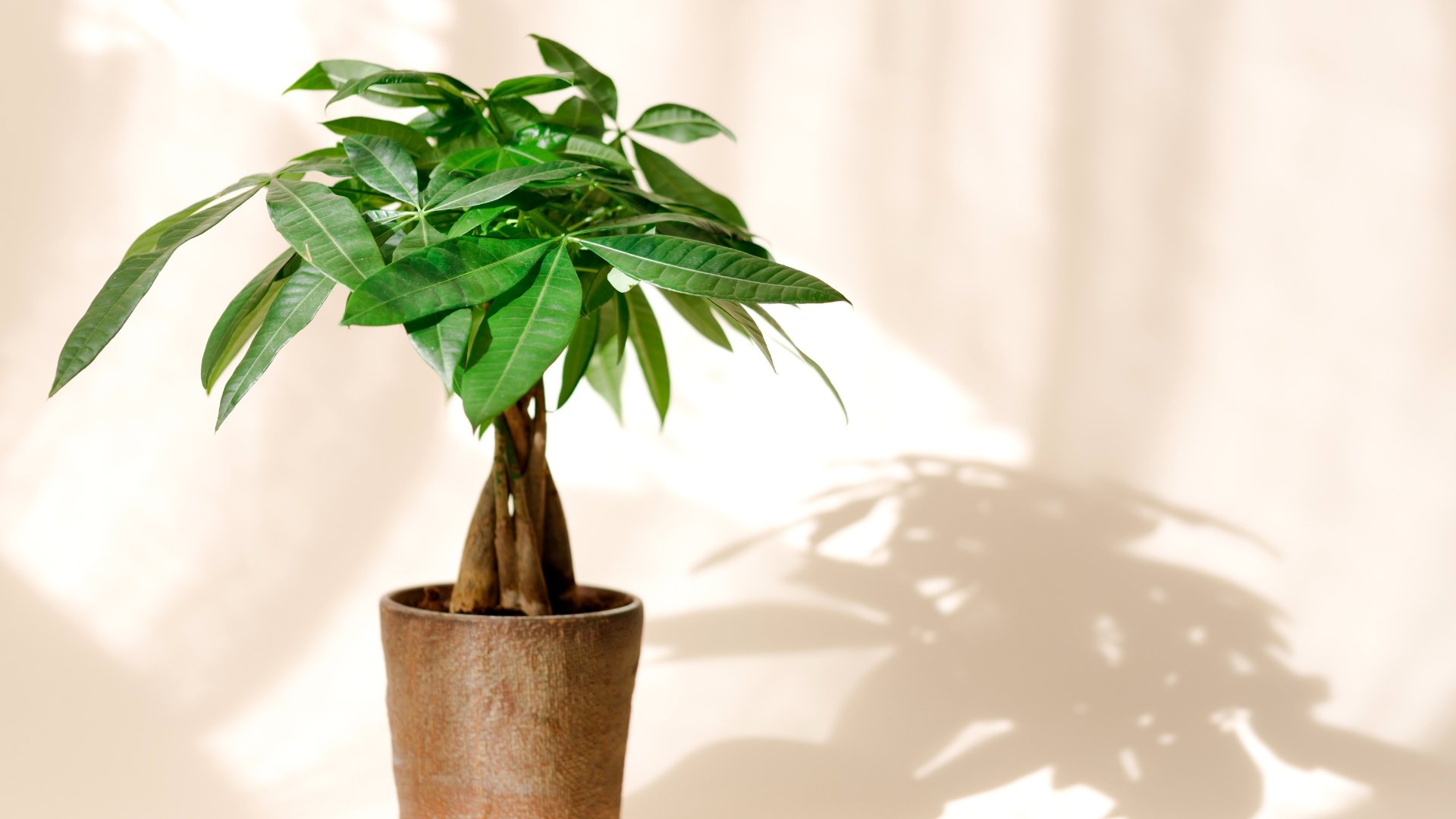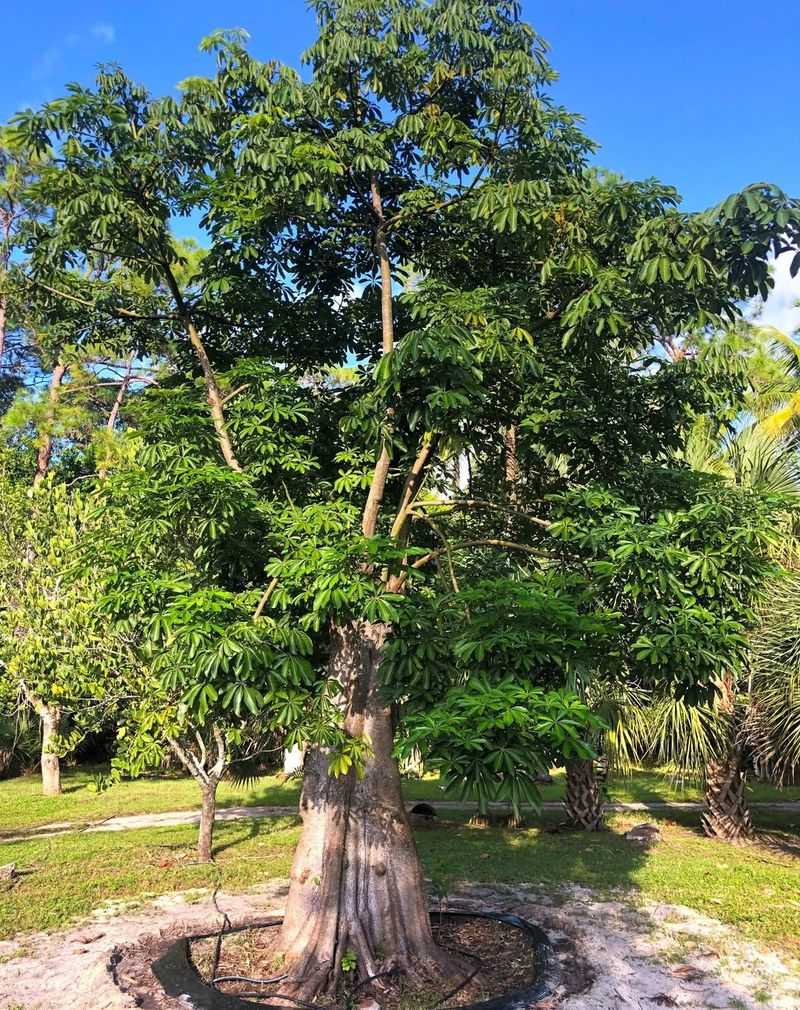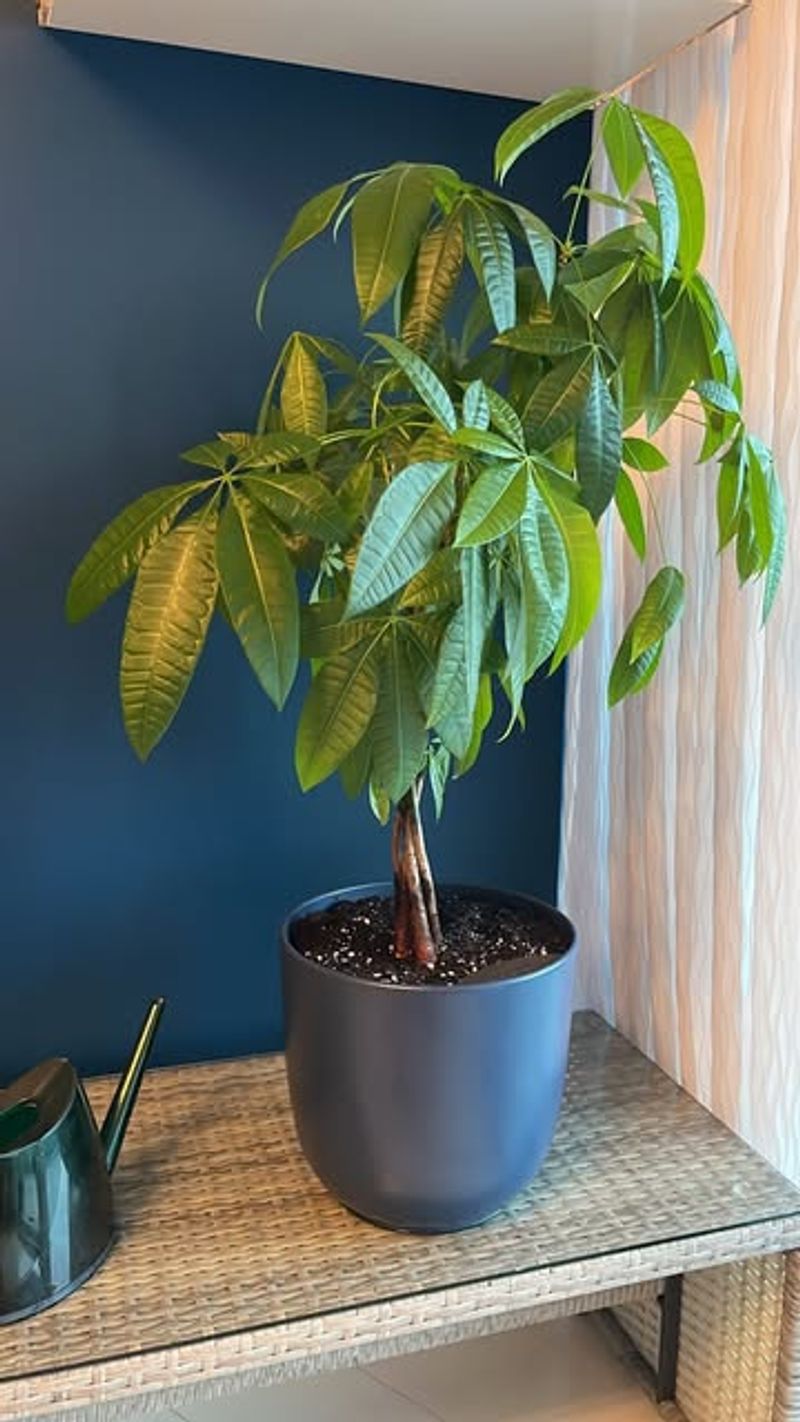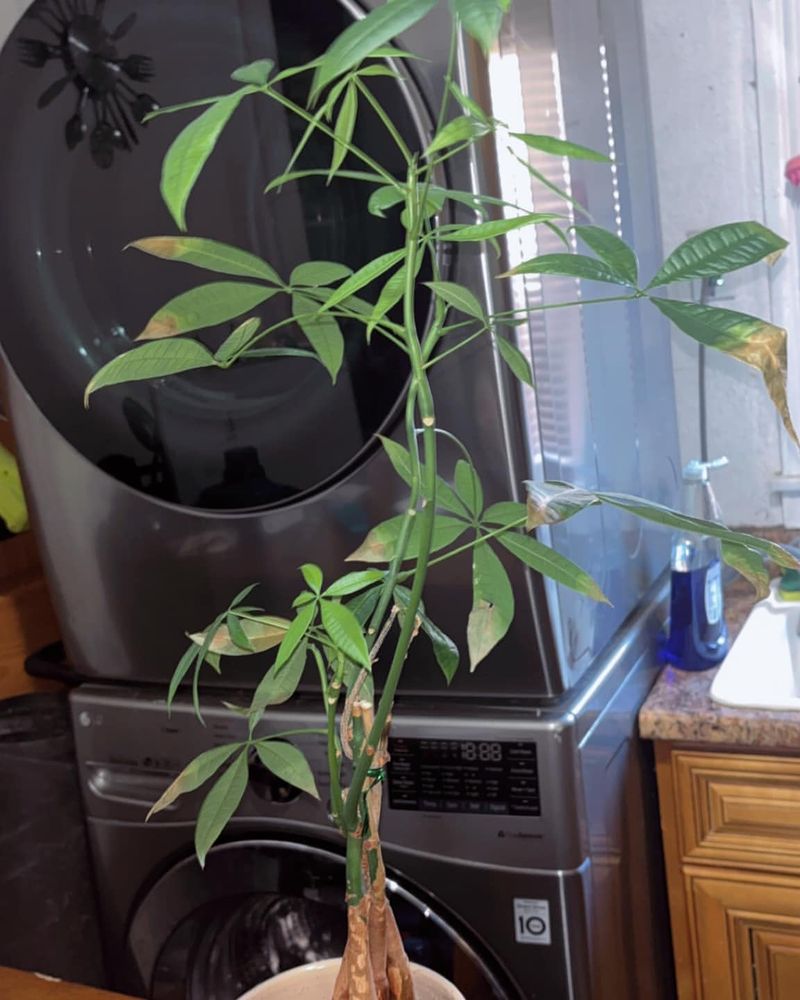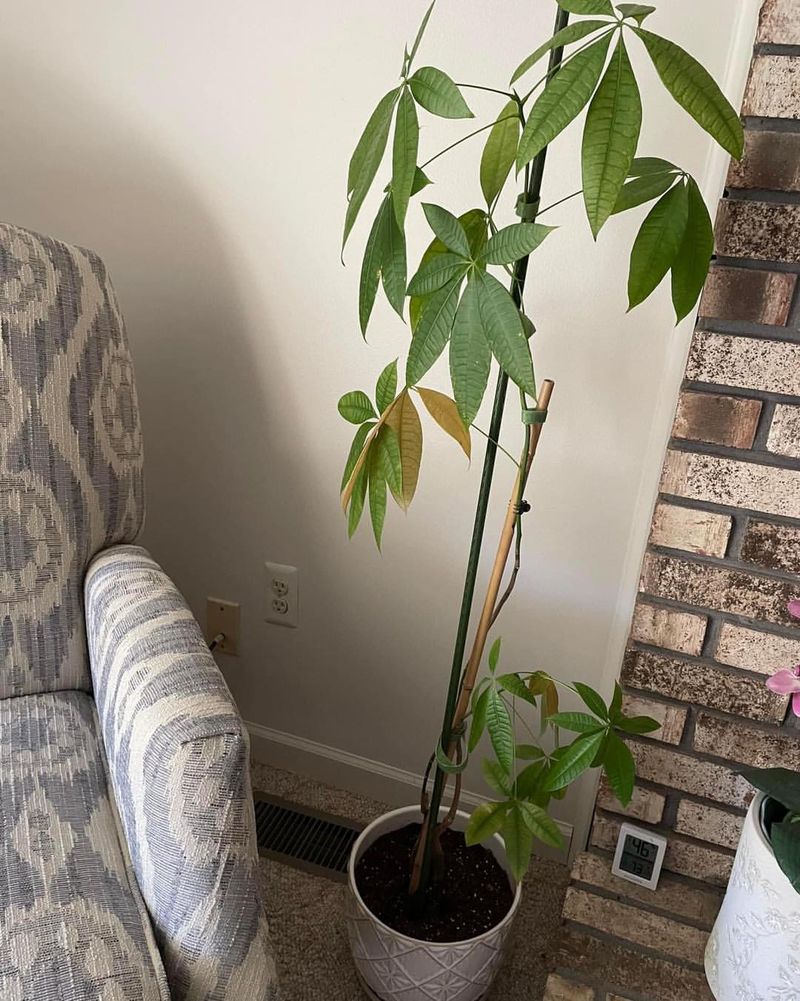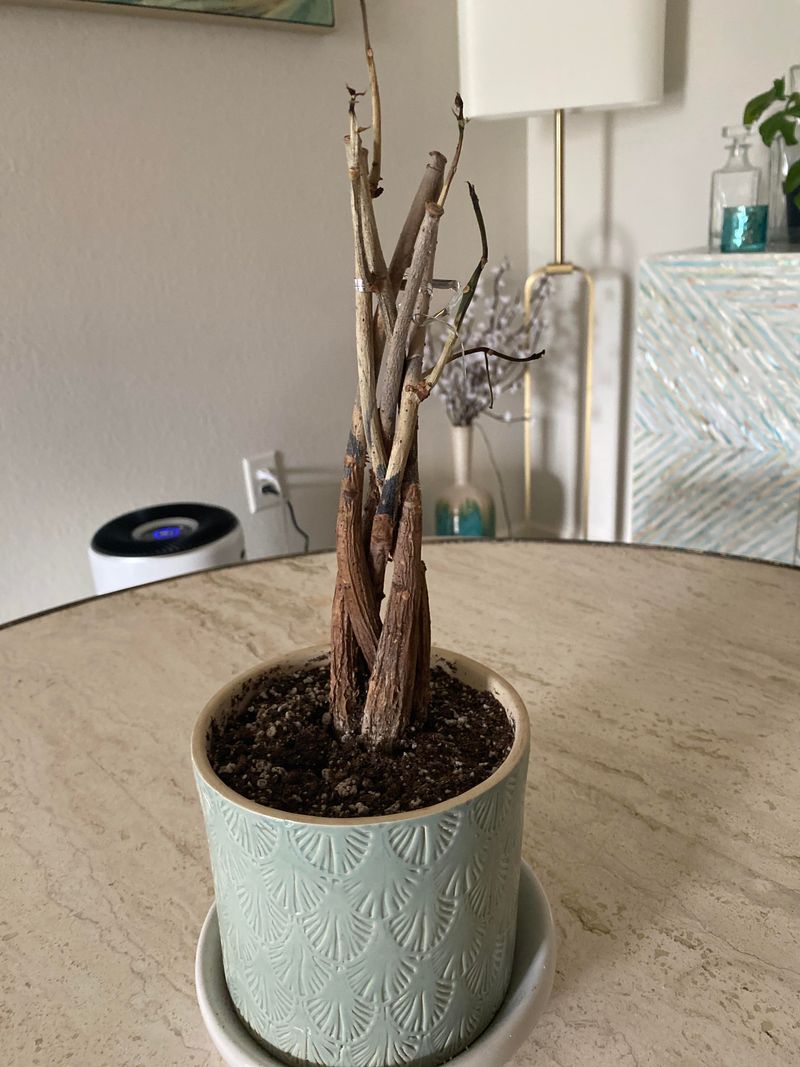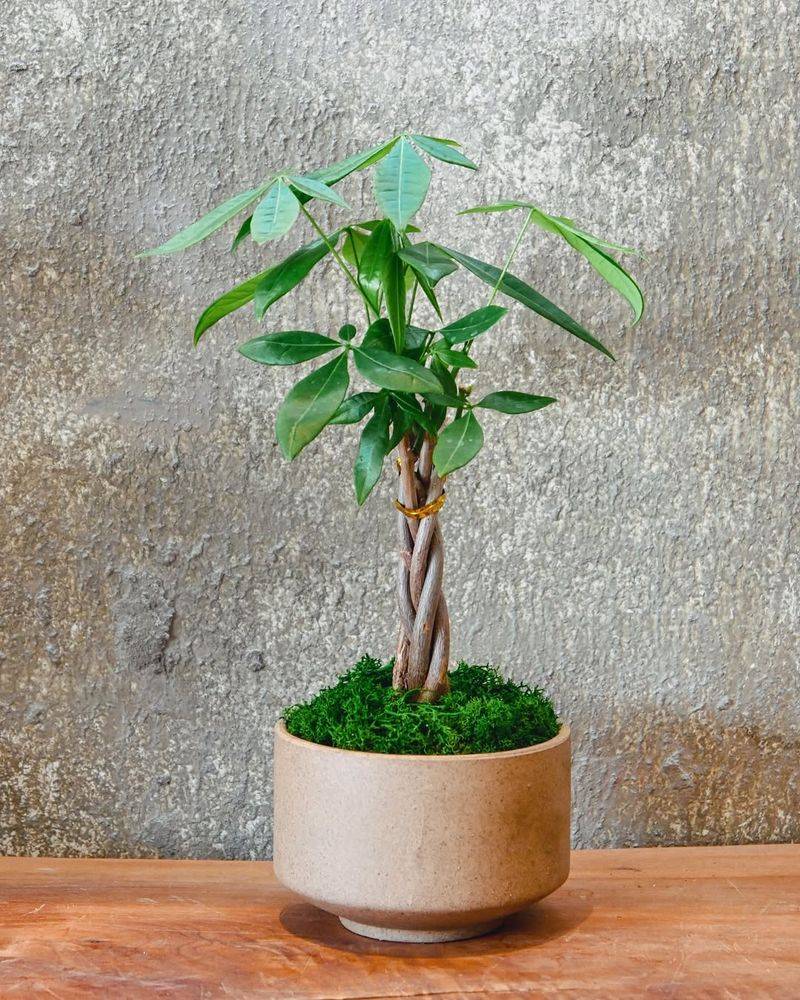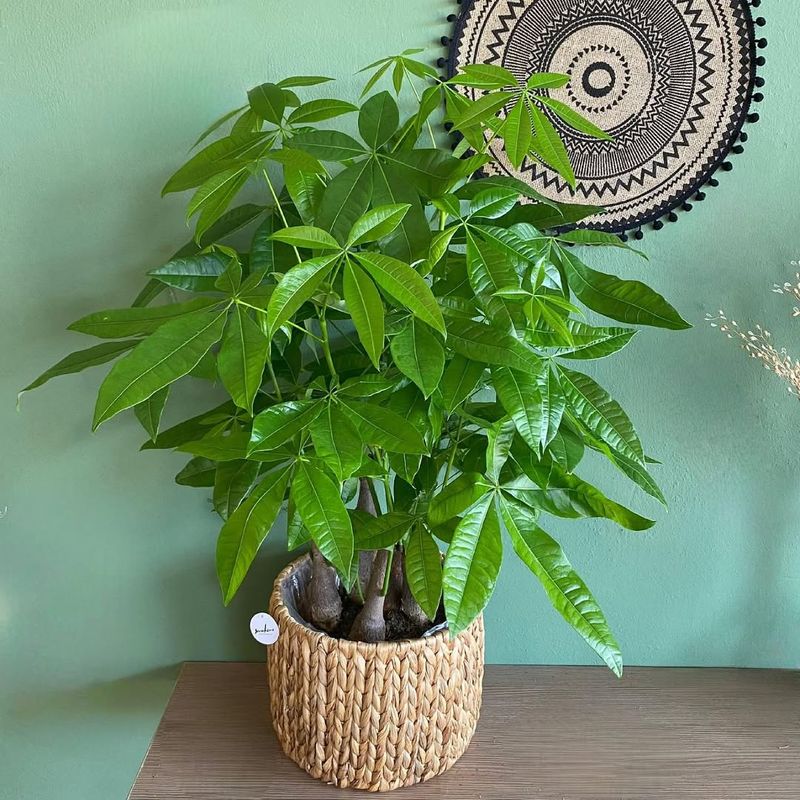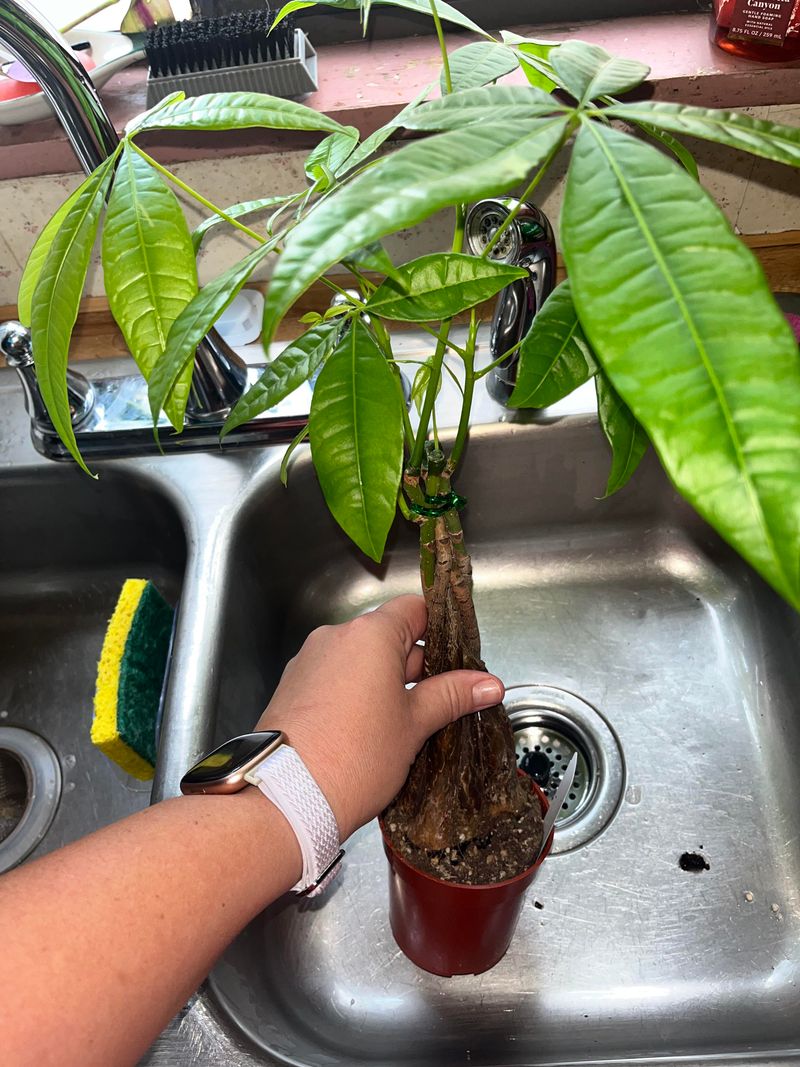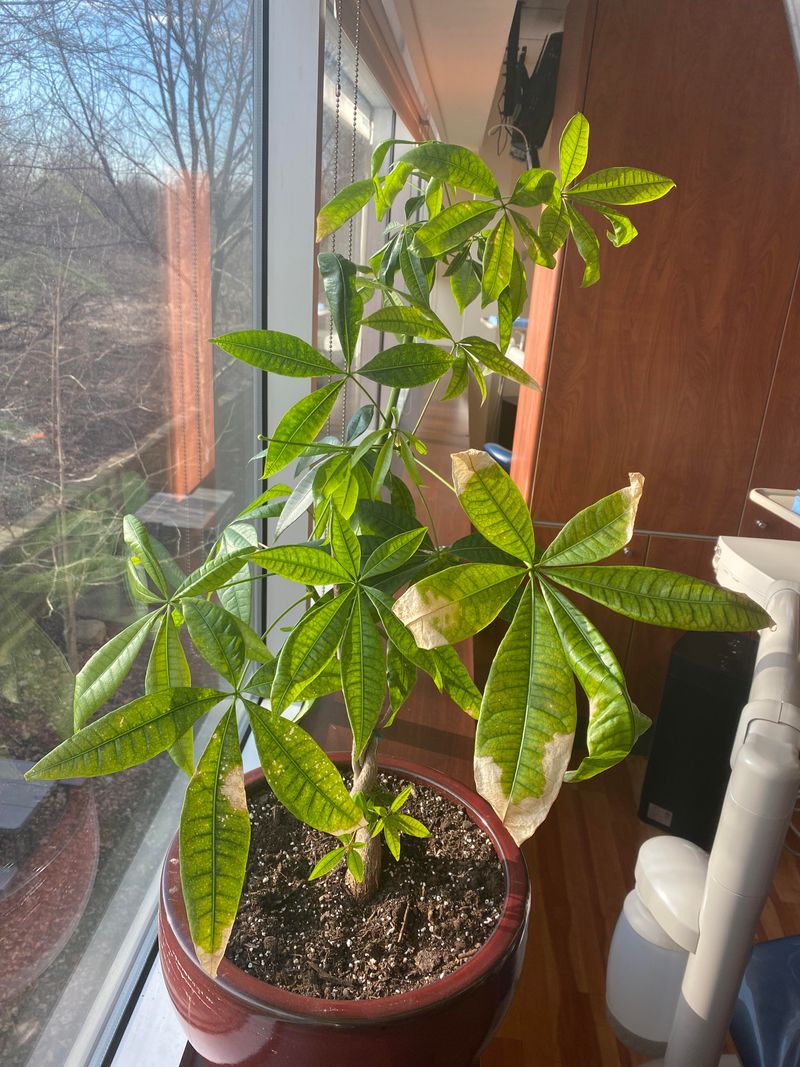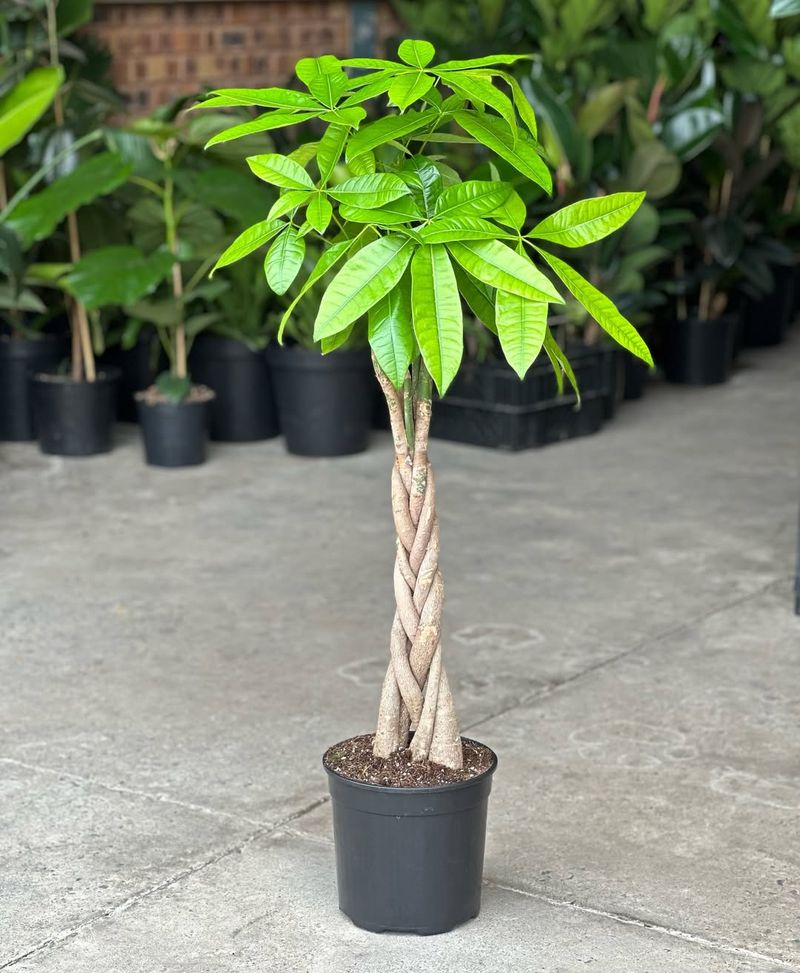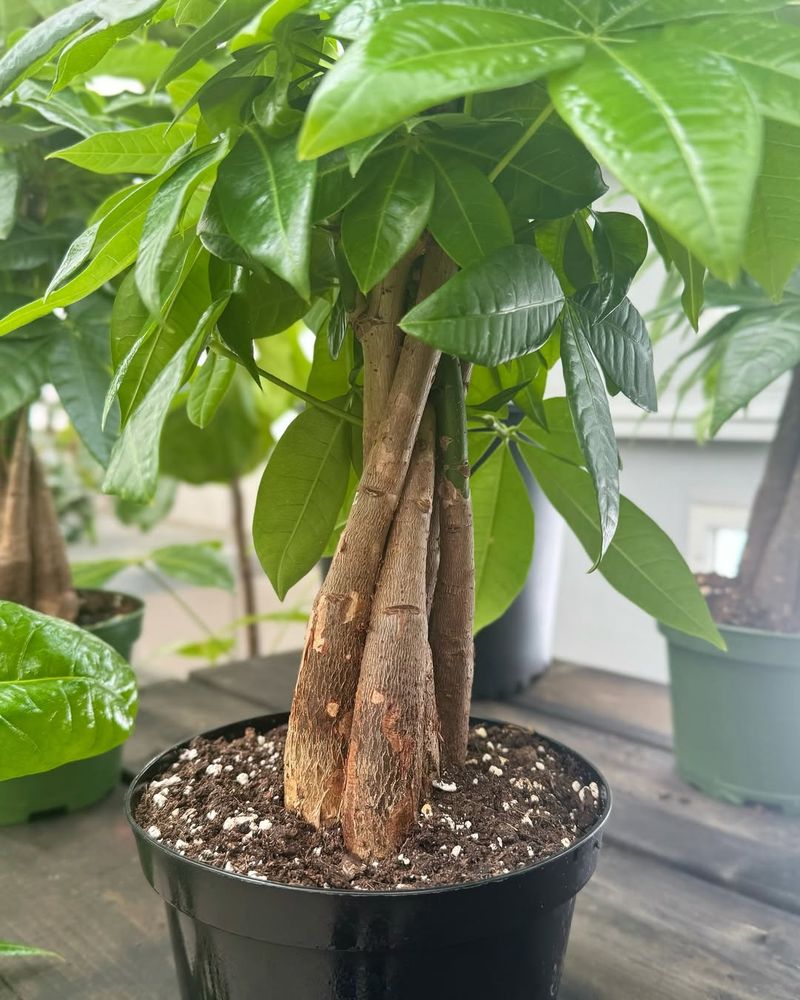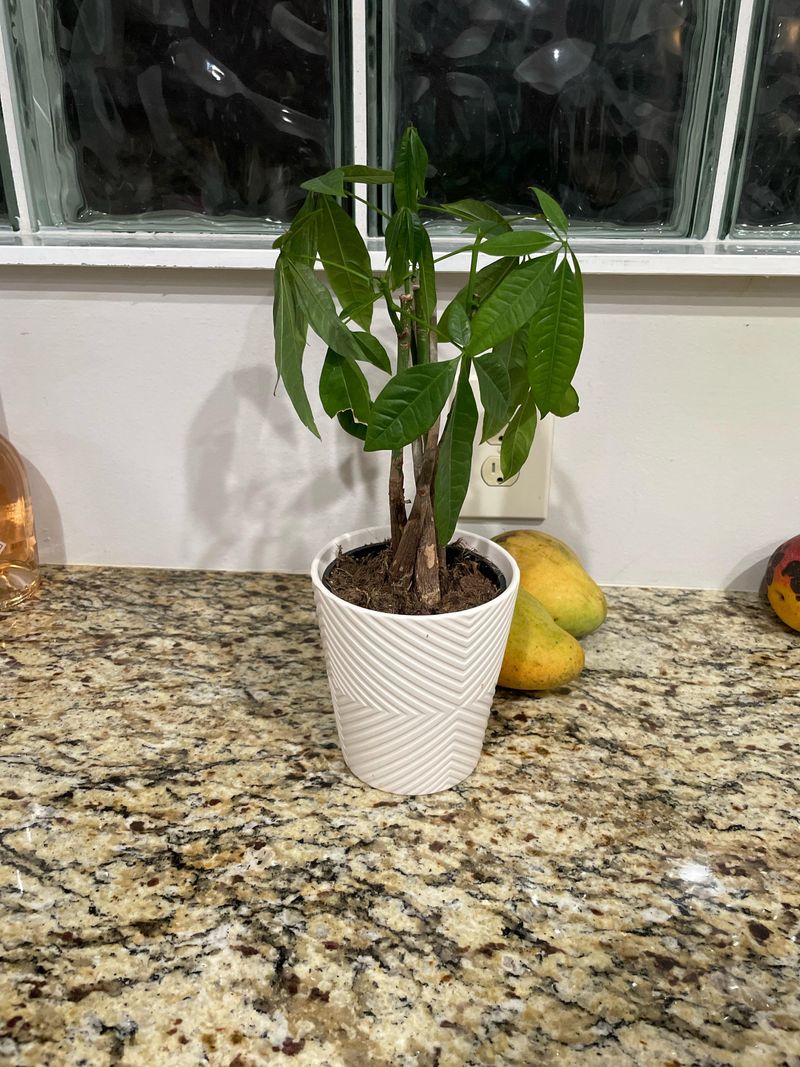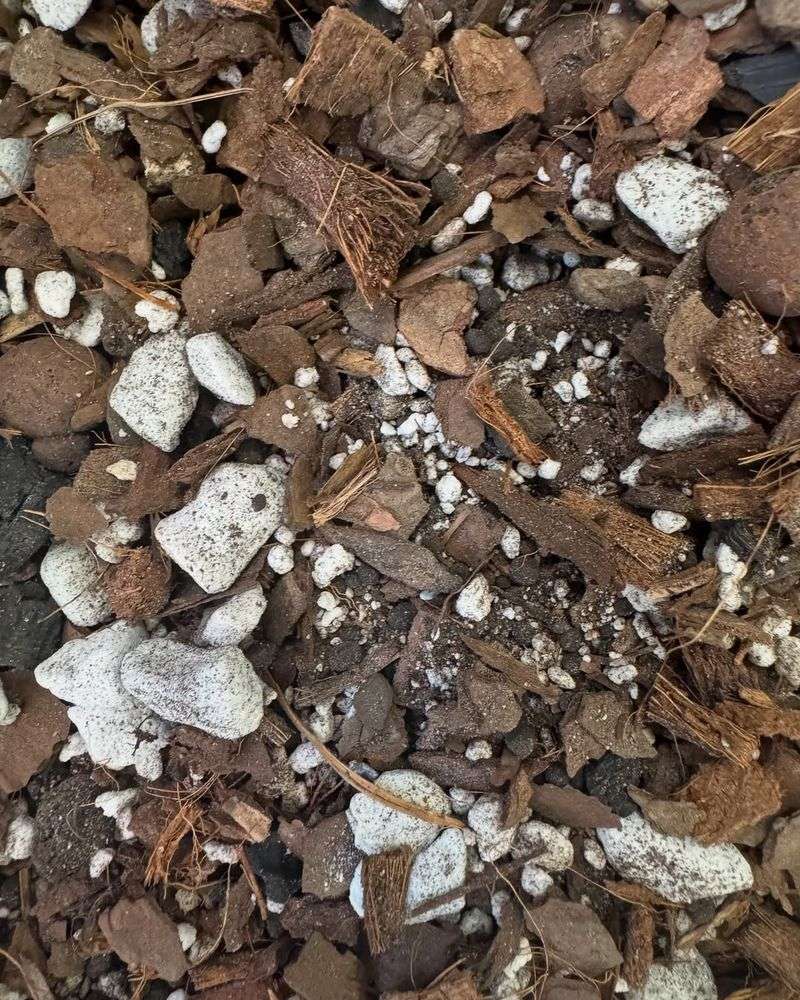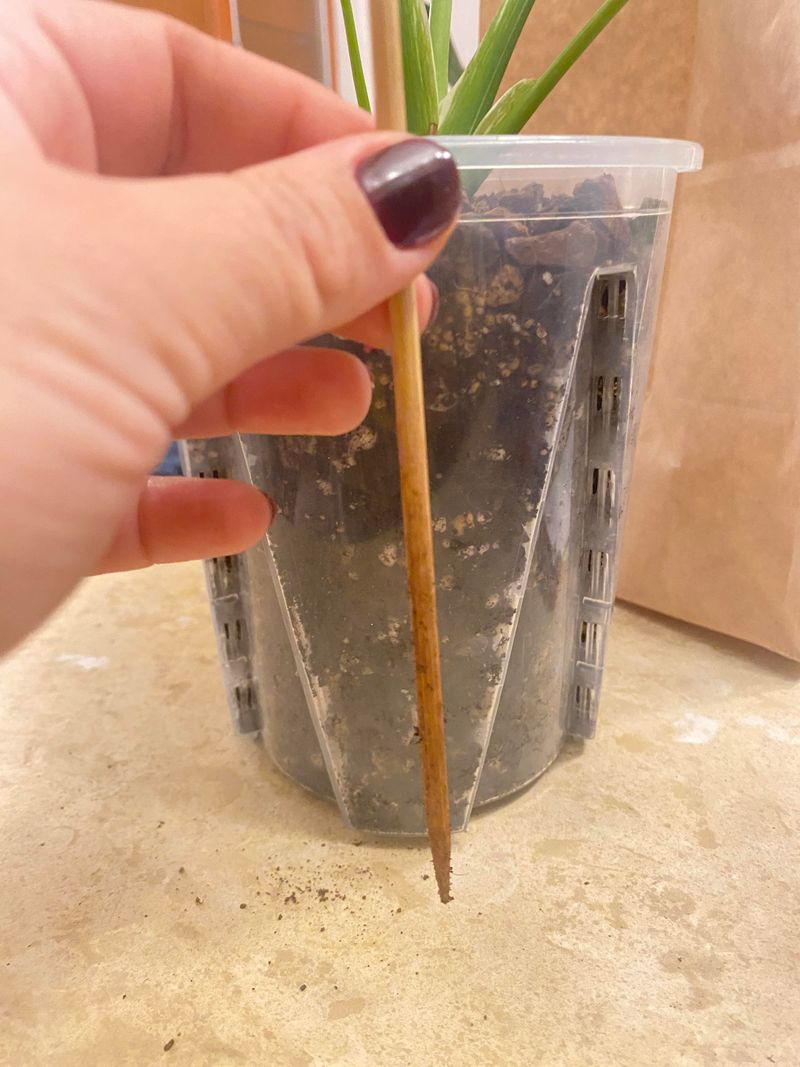Caring for a money tree isn’t just about watering—it’s about watering right. These stylish green companions, famous for their braided trunks and symbol of good fortune, have a few secrets when it comes to staying happy and healthy. It’s not just about how much water you give, but when, how, and even what kind of water you use.
From mimicking their tropical roots to avoiding soggy soil disasters, mastering the art of hydration can take your plant from surviving to thriving. Ready to unlock the watering wisdom your money tree has been waiting for? Let’s dig in!
1. Understanding The Money Tree’s Natural Habitat
These trees originate from the humid and warm regions of Central and South America. Money trees thrive in areas where they receive dappled sunlight and consistent moisture from the air and soil.
Understanding this natural setting helps mimic similar conditions indoors. Use well-draining soil and ensure the pot has adequate drainage holes.
Avoid direct sunlight, which can scorch leaves, but provide bright, indirect light. Replicating the humidity of their native environment, possibly with a humidifier, aids in their health and growth.
2. How Often Should You Water A Money Tree?
Determining the right watering frequency is akin to perfecting a delicate dance. Money trees generally need watering once a week or when the top inch of soil dries out.
Factors such as indoor temperature and humidity can influence this schedule. During winter, when growth slows, reduce watering. Creating a routine that adapts to seasonal changes ensures health. Monitor your tree’s needs by checking soil moisture regularly.
3. Signs Your Money Tree Needs Water
Wilting leaves are a tell-tale sign your plant is thirsty. A money tree in need of water may also show curling leaves that lose their vibrant green. If left too dry, leaf tips might brown, indicating dehydration.
Check the soil; if it feels dry beyond the top inch, it’s time to water. Addressing these signs quickly helps maintain its lush appearance. Regular observation prevents severe water stress.
4. Signs You’re Overwatering Your Money Tree
Overwatering is a common pitfall for enthusiastic plant parents. Yellowing leaves often signal excess moisture, as roots suffocate from lack of oxygen. Mushy stems or root rot are severe outcomes if not rectified.
Allow soil to dry between waterings to prevent such issues. Ensure good drainage to avoid water logging. Adjusting your watering routine can save your plant from overhydration woes.
5. The Best Watering Method – Top Vs. Bottom Watering
Choosing between these two ways to hydrate your plant can impact root health. Top watering, pouring water onto the soil surface, is the most common. However, bottom watering allows roots to draw moisture up effectively.
This method can encourage deep root growth and prevent overwatering by soaking only what’s needed. For best results, use a combination of both methods periodically. Experiment to find what suits your plant best.
6. Choosing The Right Pot And Drainage Setup
The right contaoner plays a pivotal role in your plant’s well-being. Opt for containers with drainage holes to prevent water accumulation at the roots.
Materials like terracotta promote breathability, essential for moisture regulation. Saucers or trays are useful to catch excess water but empty them to avoid standing water.
A pot’s size should match the plant’s growth stage, ensuring room for roots to expand. A thoughtful setup supports robust growth and health.
7. Seasonal Watering Adjustments (Spring To Winter)
Plants, like people, experience seasonal changes. During spring and summer, increased light and warmth spur growth, requiring more frequent watering. In fall and winter, growth slows, and the need for water diminishes.
Adjust your routine accordingly by reducing watering frequency in cooler months. Consistent observation helps tailor care to seasonal needs. This adaptability supports year-round vitality.
8. How Humidity Affects Watering Needs
Humidity levels greatly influence how often your plant needs watering. In dry climates, moisture evaporates quickly, necessitating more frequent watering. Conversely, high humidity retains moisture longer in the soil.
To maintain optimal conditions, consider using a humidifier or misting the plant. Understanding your home’s humidity helps adjust watering schedules effectively. This balance fosters healthy growth.
9. Tap Vs. Filtered Vs. Distilled
The water type can affect plant health. Tap water often contains chlorine, which can harm sensitive plants over time. Filtered water removes some chemicals, providing a safer option.
Distilled water, free from impurities, is ideal for delicate needs but lacks essential minerals. Consider your plant’s sensitivity and local water quality when choosing. Alternating between filtered and distilled can balance nutrient needs.
10. What Time Of Day Is Best For Watering?
Morning is an optimal time for irrigation, allowing excess to evaporate under daylight. This timing helps prevent fungal issues by ensuring leaves dry quickly. Watering in the evening might leave soil damp overnight, risking root rot.
Early watering aligns with natural plant cycles, promoting healthy photosynthesis. For best practices, avoid splashing leaves to keep them dry. Consistency in timing supports overall plant health.
11. Hydrating Indoor Vs. Outdoor Money Trees
Environmental factors dictate watering needs for indoor versus outdoor plants. Indoor trees, shielded from wind and sun, require less frequent watering. Outdoor trees, facing elements, may need more water, especially in hot or windy conditions.
Monitor weather and adjust watering to prevent under or overwatering. Both environments benefit from well-draining soils. Tailoring care to location ensures optimal hydration.
12. Combine Watering With Fertilizer For Optimal Growth
Combining watering with fertilization maximizes growth. Liquid fertilizer can be added to water every few weeks during active growth phases. This blend supports nutrient absorption and encourages lush foliage.
Avoid over-fertilizing, which can harm the plant. Balance is key; observe how your money tree responds to adjustments. Regular feeding with water ensures steady, healthy growth.
13. Common Watering Mistakes To Avoid
Overwatering tops the list of mistakes, leading to root rot and fungus. Underwatering is less risky but still detrimental, causing dehydration. Watering on a schedule without checking soil moisture can be harmful.
Use a finger test or moisture meter to guide decisions. Avoid watering leaves directly to prevent disease. Careful attention to these details improves overall plant health.
14. How Soil Type Influences Water Retention
Soil composition affects how water is retained and drained. A mix with peat and perlite offers good drainage and moisture retention. Heavy soils can suffocate roots by holding too much water.
Light, airy mixes help prevent overwatering, a common issue with money trees. Choosing the right soil supports robust growth and health. Tailor your soil choice to your plant’s specific needs.
15. Monitoring Moisture Levels – Tools And Tips
Monitoring tools help maintain ideal watering practices. A moisture meter provides accurate readings, taking guesswork out of the equation. The finger test, inserting a finger into the soil, is also effective for gauging dryness.
Regular checks prevent the extremes of over or underwatering. Consistent monitoring supports a thriving plant. These tools offer peace of mind in plant care.

